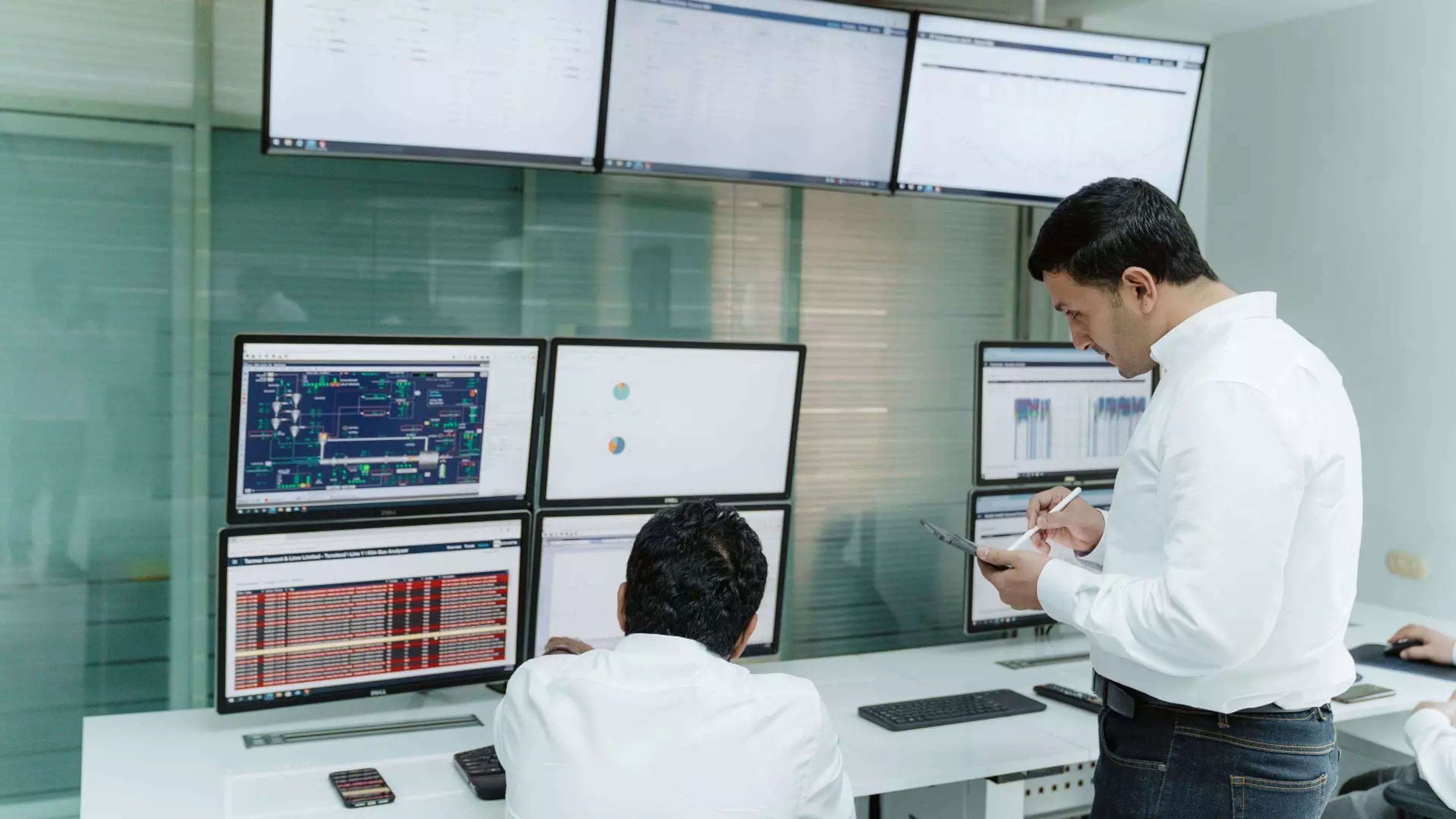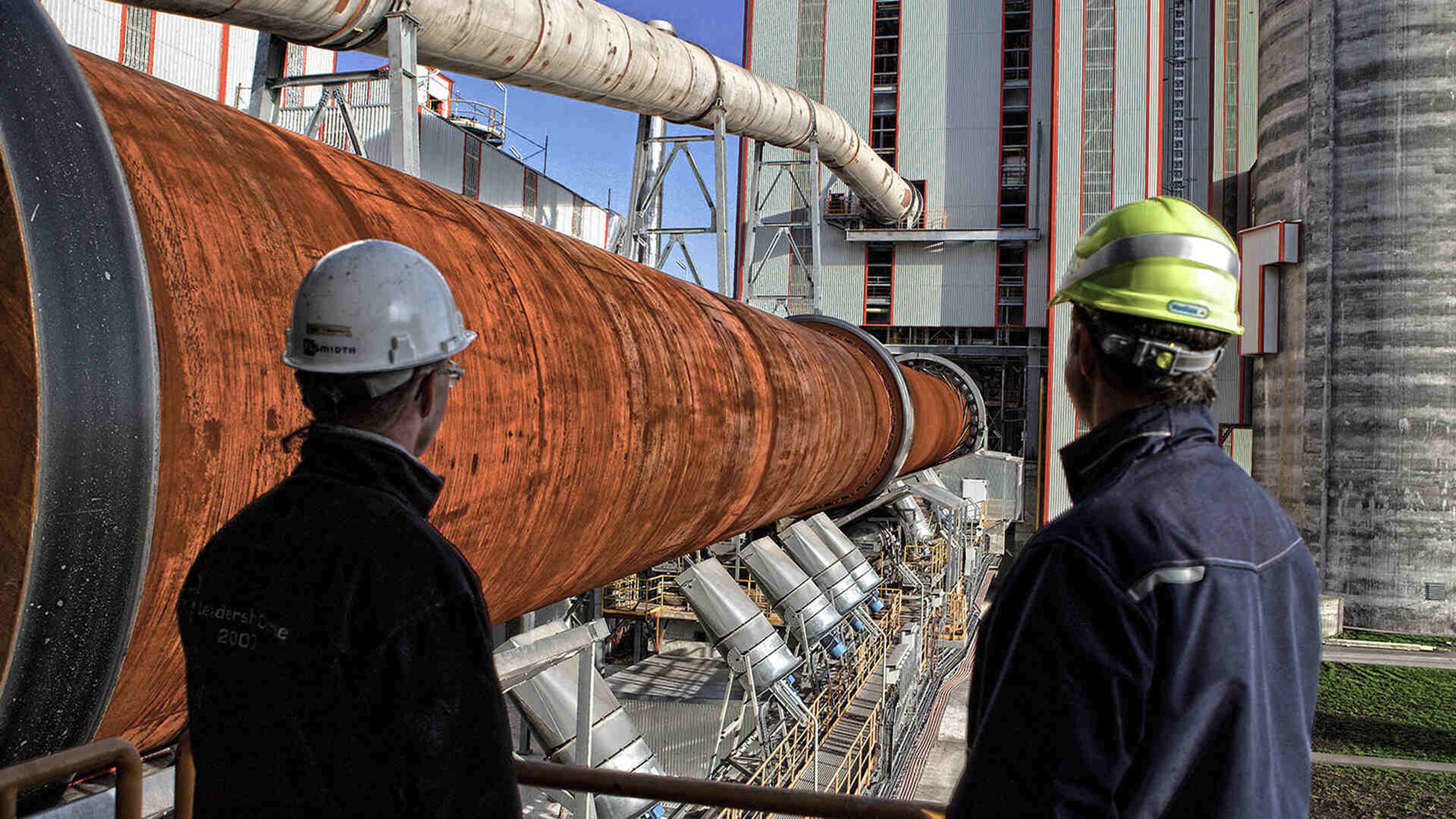article
Data standardisation: turbocharging green innovation in cement
Data standardisation has unlocked the digital revolution in other industries. It’s time for the cement industry to harness that power for change. At this year’s Optimisation conference, hosted by World Cement, our Chief Digital Officer, Mikko Tepponen and Head of Digital Development, Anders Noe Dam delivered a call for data standardisation in cement.
As we move through the third decade of the 21st Century, the challenges facing the cement industry are very different from those that caused headaches at the start of the millennium. The sustainability imperative is now at the heart of a global effort to mitigate the extent and impact of climate change; an effort that is touching all aspects of business and society. Meanwhile, demand for cement is plateauing. The age of large-scale volume growth is firmly in the past.
As a result, traditional levers employed to keep costs down will be, at best, of limited use – and at worse, ineffective. Instead, new optimisation and efficiency strategies, empowered by innovative digital technologies, will be central to achieving the next level of both profitability and sustainability.
To see the benefits of these new approaches to the challenges of today, you need only look at the auto industry, where leading manufacturers and their supply chains have already gone a long way in implementing the principles of Industry 4.0. Underpinning this effort has been a strong collaborative effort to set common standards for data.
This data standardisation enables not only major manufacturers and their suppliers to innovate but opens innovation up to a much broader range of players, including start-ups and research organisations. The path taken is clear: standardisation has led to interoperability which has led to exponential innovation. The results include improved safety, lower fuel consumption – and rapid advances in the field of autonomous cars.
No global language for cement
In contrast, the cement industry lags behind when it comes to data standardisation – and is therefore missing important opportunities to benefit from new and emerging technologies. This goes right down to the basics of how we name things, what data types are collected, and what units are used. As a simple example: is pressure being measured in bar, psi or pascals? And are the data being collected in decimal or hexadecimal formats?
CHIEF DIGITAL OFFICER FLSmidth Cement - MIKKO TEPPONEN
There are some signs of change. Organisations, such as NAMUR and VDMA , already produce standards that could provide inspiration. Many companies in the cement industry – both OEMs like FLSmidth Cement and the bigger corporate cement producers – are also already doing their own blueprinting and benchmarking to improve products and services. At an industry level, the World Cement Association started its own benchmarking and performance-improvement product called PEGASUS in 2020.
Signs of progress being made in this area provide encouragement. But it is limited. Much more of the industry will need to embrace the need to standardise, if we are to accelerate and reap the benefits that it offers.
Learning from examples: NAMUR and the VDMA
- NAMUR – the User Association of Automation Technology in Process Industries – produces standards that include neutral and functional descriptions to support the integration of machine control into overall control systems.
- VDMA brings OEMs and users together to define standards for equipment, including digital blueprints that standardise the interface to the machine and use standard protocols, such as OPC-UA, for communication between machine control and overall control systems.
Standardisation is the future
This is not to say that we do not recognise the challenges and the questions raised by this call to data standardisation. Who will decide the standards? Will they benefit you, specifically, or just give away competitive advantage? In an industry that remains relatively fragmented and regionalised – and without a history of collaboration between players – the challenge of bringing people together is not to be underestimated.
As an OEM with a long history of serving the industry with tailor-made solutions, standardisation is a challenge for us too. But we believe it is essential. It is essential to meet our own MissionZero sustainability agenda and to enable a transformation of the industry.
We also believe that standardisation is going to come – whether the industry accepts that or not. There is increasing public pressure for transparency to show how sustainability targets are being met. Take, for example, the EU Taxonomy Regulations on Sustainable Activities, which establishes a standard framework for assessing whether an economic activity qualifies as environmentally sustainable.
The goal of the taxonomy is to enable investors to see past any corporate greenwashing and target their investment toward sustainable economic activities. To enable this, the sustainability metrics reported by companies will have to be standardised at an industry level so that apples can be compared with apples. It will bring a level of accountability and transparency to sustainability that has not been seen before.
A final point to note is that – unlike car manufacturers, which each have millions of cars feeding data back – the cement industry has a limited number of plants. To gain the quantity of data and insight needed to empower a similar digital transformation as seen in the auto industry, will need to pool our data resources. And that means standardisation.
A challenge – but a bigger opportunity
Data standardisation is no doubt a challenge. But it is a much greater opportunity. Imagine, for a moment, a world where data is standardised, stored on the Cloud and made available for collaborative innovation across a wide range of industry partners. We would see parallel innovation that was easy to benchmark across the industry, and so we would be quickly able to understand the benefits such innovation could bring to our individual operations.
Ultimately, we would see a huge acceleration of the implementation of optimisation products and services. And we could go further and imagine marketplaces developing for such services. App stores for the cement industry, where you download what you need, where updates are managed remotely and automatically, where new solutions are made available, and where user ratings, linked to defined benchmarks, aid better decision making.
This may feel like fantasy more than fiction. But the vision is already becoming a reality in the mining industry with the launch of Oren , a marketplace for digital mining services, last year. Its aim is to facilitate the finding, understanding and purchase by mining companies of the most relevant digital solutions and services, thereby helping the industry to navigate its path into Industry 4.0.
A call to action
We believe standardisation offers remarkable advantages. We also believe it is inevitable, as regulations tighten and society requires greater accountability from its industrial companies. The question is this: as an industry, do we want to be in the driver’s seat of this change and be a part of defining how our industry moved forward? If we do, the time to act is now.

.png?w=1080&q=80&auto=format)

